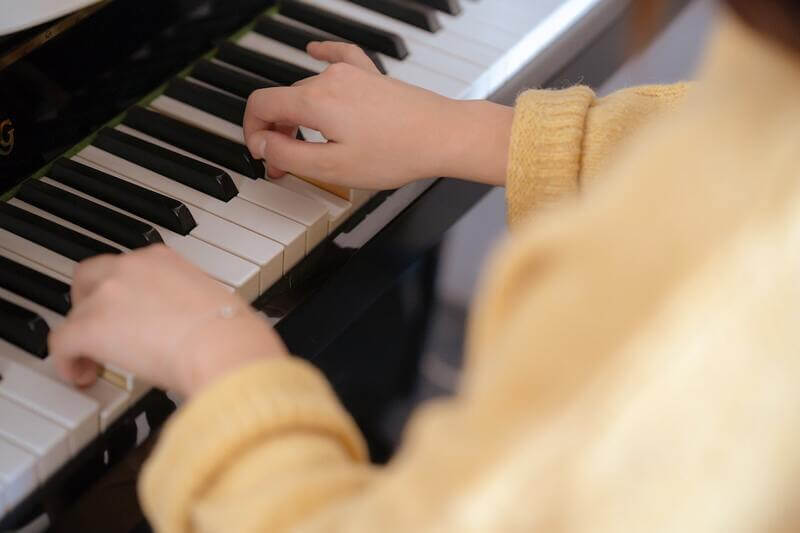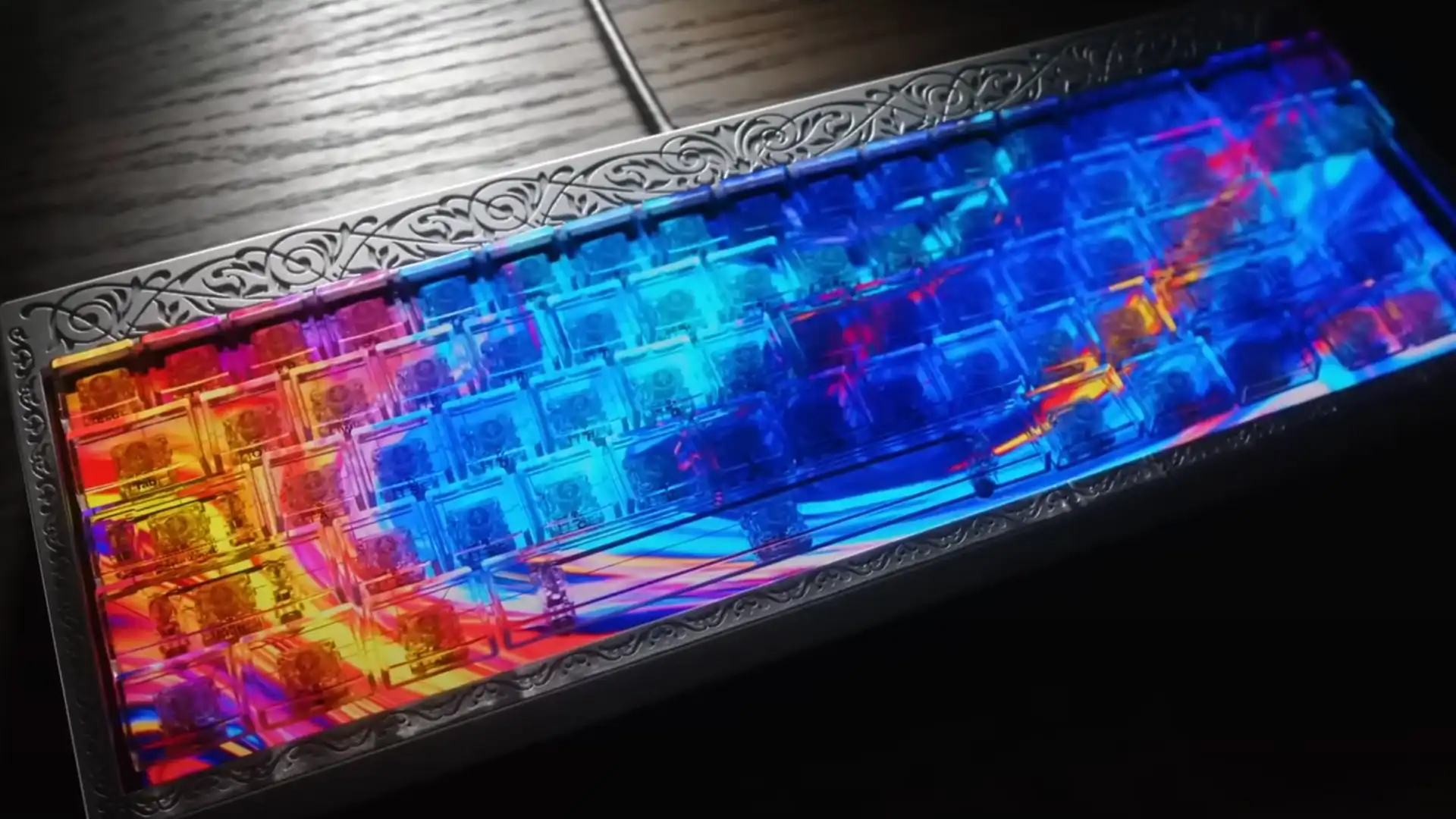When shopping for a smart piano keyboard, the type of key action makes a huge difference in feel, playability, and technique. But what’s the difference between weighted vs semi-weighted vs synth action keys?
In this guide, you’ll learn the pros, cons, and ideal use cases for each type of key action, including beginner-friendly options like the PopuPiano Smart Keyboard that combines portability with smart learning features.
Understanding key action helps you choose a keyboard that feels natural, supports your playing style, and enhances your music practice.
What is Weighted Key Action?

Weighted keys mimic the feel of an acoustic piano by providing resistance when pressed.
Key Points:
- Heavier touch simulates real piano keys.
- Excellent for building finger strength and proper technique.
- Often found on full-size 88-key digital pianos, but also available in compact smart pianos.
Pros:
- Realistic piano feel.
- Improves dynamic control and finger strength.
- Great for transitioning to acoustic pianos.
Cons:
- Heavier, may tire beginners quickly.
- Slightly more expensive.
- Larger, less portable than synth-action keyboards.
What is Semi-Weighted Key Action?
Semi-weighted keys combine resistance with spring mechanisms for a lighter touch than fully weighted keys.
Key Points:
- Lighter than weighted keys, but with some resistance.
- Provides a middle ground between synth action and full weighted keys.
- Popular for portable smart pianos and beginner instruments.
Pros:
- Easier for beginners or younger players.
- Allows faster playing than weighted keys.
- Compact and lightweight designs available.
Cons:
- Less realistic than fully weighted keys.
- Not ideal for advanced classical training.
- Resistance may feel inconsistent depending on brand.
What is Synth Action?
Synth-action keys are light, spring-loaded keys often found on synthesizers and compact portable keyboards.
Key Points:
- Very light and easy to press.
- Perfect for electronic music, synths, and gaming-style piano apps.
-
Often found on foldable smart pianos like PopuPiano Smart Keyboard.
Pros:
- Extremely portable and lightweight.
- Ideal for beginners or casual players.
- Great for music production and fast playing.
Cons:
- Feels less like an acoustic piano.
- Minimal resistance can limit finger strength development.
- May be too light for classical or expressive playing.
Comparison Table: Weighted vs Semi-Weighted vs Synth Action
|
Feature
|
Weighted Keys
|
Semi-Weighted Keys
|
Synth Action Keys
|
|
Touch Resistance
|
High – mimics acoustic piano
|
Medium – balanced resistance
|
Low – light, spring-loaded
|
|
Ideal for Beginners
|
Moderate – can be tiring
|
High – easier to play
|
High – very beginner-friendly
|
|
Portability
|
Moderate – heavier
|
High – lighter
|
Very High – ultra-light, foldable
|
|
Best For
|
Classical, acoustic practice
|
Pop, electronic, casual playing
|
Gaming, production, portable learning
|
|
Price Range
|
High
|
Medium
|
Low-Medium
|
Who Should Choose Weighted Keys
- Students aiming to build proper piano technique.
- Classical or jazz pianists transitioning to acoustic pianos.
- Players seeking realistic feel for advanced pieces.
Who Should Choose Semi-Weighted Keys

- Beginners or younger players needing lighter keys.
- Musicians balancing portability and practice quality.
- Users learning pop, rock, or casual music styles.
Who Should Choose Synth Action Keys
- Musicians prioritizing portability or travel-friendly keyboards.
- Electronic music producers or casual learners.
- Gamers using piano learning apps or foldable smart pianos.
Setup and Care Tips for All Keyboards
- Place keyboards on a stable surface for consistent playing.
- Use headphones for silent practice when needed.
- Clean keys regularly with a microfiber cloth.
- Check Bluetooth or USB connectivity for smart pianos.
- Foldable models should be stored safely to avoid damage.
1. Touch Sensitivity and Dynamic Control
-
Weighted Keys: Offer the most nuanced touch sensitivity, allowing expressive dynamics from soft pianissimo to loud fortissimo.
-
Semi-Weighted Keys: Provide moderate sensitivity, enough for most pop and electronic pieces, but less responsive for classical pieces.
-
Synth Action Keys: Limited dynamic control; ideal for casual play, gaming apps, or production work where speed matters more than expressiveness.
Understanding touch sensitivity helps match the keyboard to your music style and learning goals.
2. Learning Curve for Beginners
-
Weighted Keys: Can be challenging for absolute beginners due to resistance but are excellent for developing proper finger strength.
-
Semi-Weighted Keys: Easier to start with; balances learning technique while remaining comfortable for smaller hands or younger players.
-
Synth Action Keys: Very beginner-friendly; minimal resistance allows learners to focus on timing and note accuracy.
Choosing the right key action can accelerate progress and prevent fatigue.
3. Integration with Smart Features and Apps
-
Weighted Keyboards: Some smart pianos combine full-weighted keys with LED learning guides and app integration for realistic practice.
-
Semi-Weighted Keyboards: Often used in portable smart pianos that connect to tablets or music apps.
-
Synth-Action Keyboards: Commonly feature foldable designs, Bluetooth, and interactive apps for gaming-style piano lessons, like PopuPiano Smart Keyboard.
Compatibility with learning apps enhances practice efficiency and makes learning more engaging.
4. Performance and Recording Considerations
-
Weighted Keys: Ideal for recording realistic piano tracks or live classical performances.
-
Semi-Weighted Keys: Suitable for casual recording, pop, or synth-based tracks.
-
Synth Action Keys: Great for electronic music production and MIDI-controlled setups, especially when portability is crucial.
Matching key action to your performance needs ensures better sound control and workflow.
5. Maintenance and Longevity
-
Weighted Keys: Durable but heavier; require careful handling during transport.
-
Semi-Weighted Keys: Lighter, generally easier to maintain; good for foldable smart pianos.
-
Synth Action Keys: Minimal maintenance; light spring mechanisms are simple to repair or replace if needed.
Frequently Asked Questions
What is the main difference between weighted and semi-weighted keys?
Weighted keys provide full resistance like an acoustic piano, while semi-weighted keys are lighter but still offer some resistance.
Is synth action good for beginners?
Yes, synth-action keyboards are light and easy to press, making them ideal for beginners or casual learners.
Can I practice classical piano on semi-weighted keys?
You can, but semi-weighted keys won’t fully replicate the feel of an acoustic piano, which may limit finger strength development.
Which key action is best for travel and portability?
Synth-action keyboards, especially foldable smart pianos like PopuPiano Smart Keyboard, are lightweight and easy to transport.
Do weighted keys make a difference for music production?
Weighted keys help with expressive playing but are not essential for production-focused electronic music, where synth action is often sufficient.
Conclusion
Choosing between weighted vs semi-weighted vs synth action keys depends on your goals, skill level, and portability needs.
-
Weighted: Best for realistic feel, classical training, and finger strength.
-
Semi-Weighted: Good middle ground for beginners or casual players.
-
Synth Action: Ideal for travel, lightweight smart pianos, and music production.
For a compact, foldable, and interactive learning experience, the PopuPiano Smart Keyboard combines LED-guided learning, foldable design, and synth-action keys — perfect for beginners and on-the-go practice.




